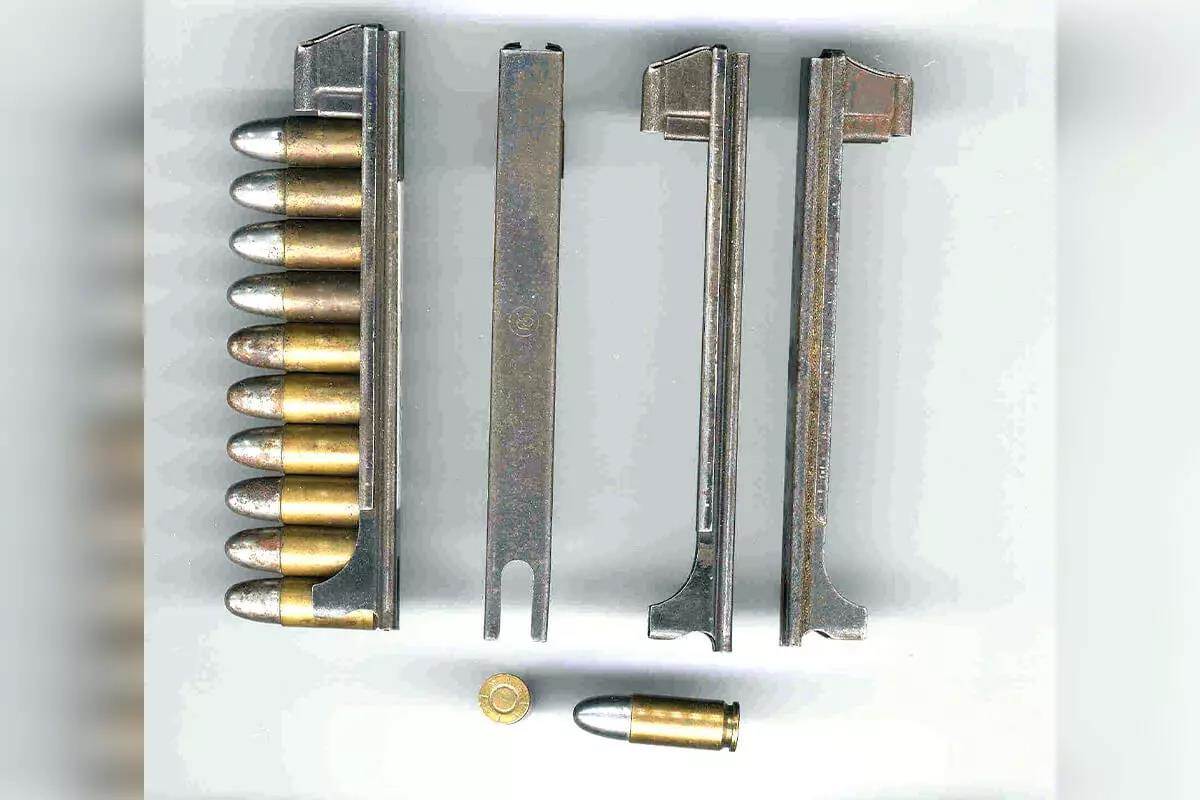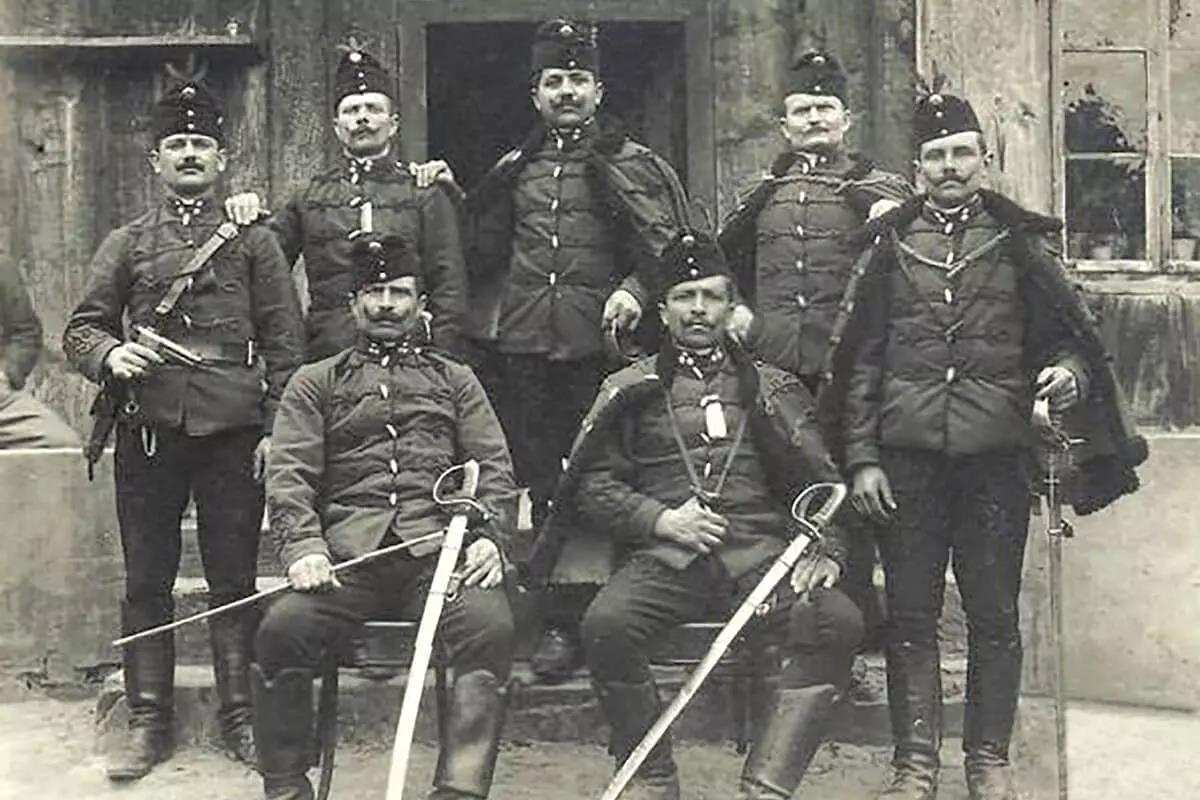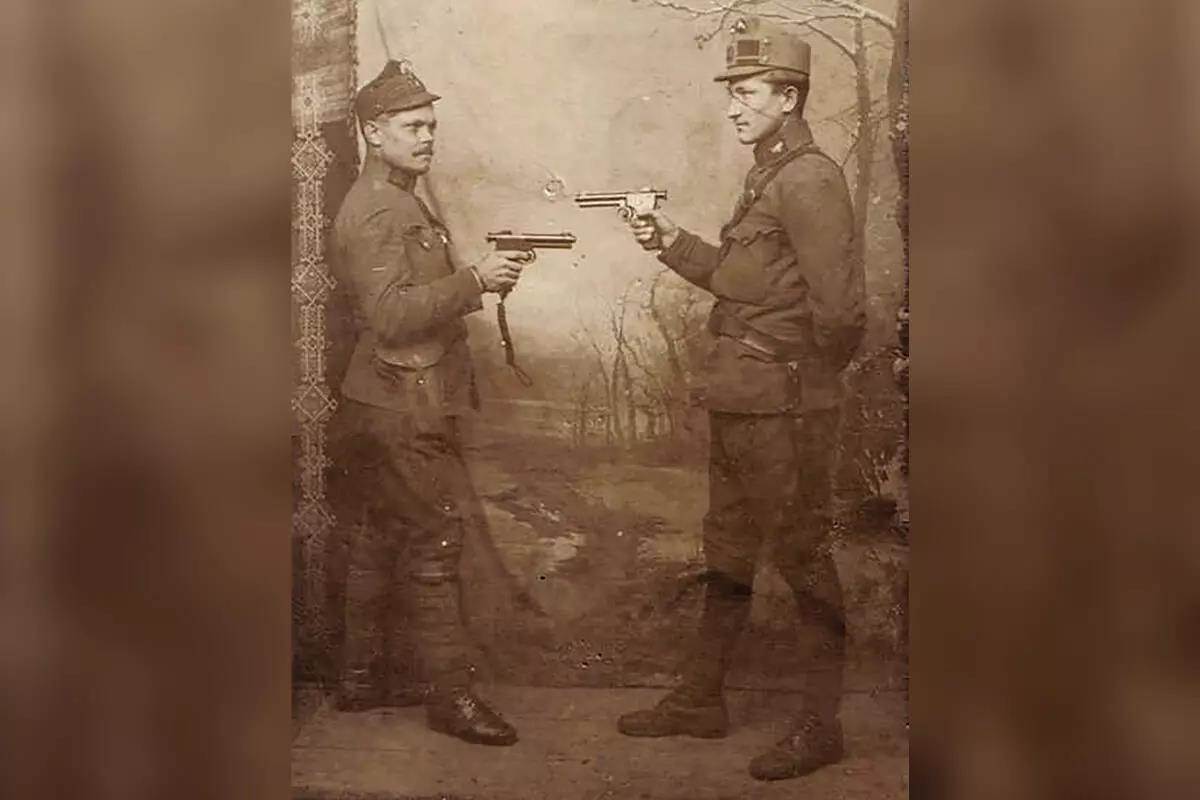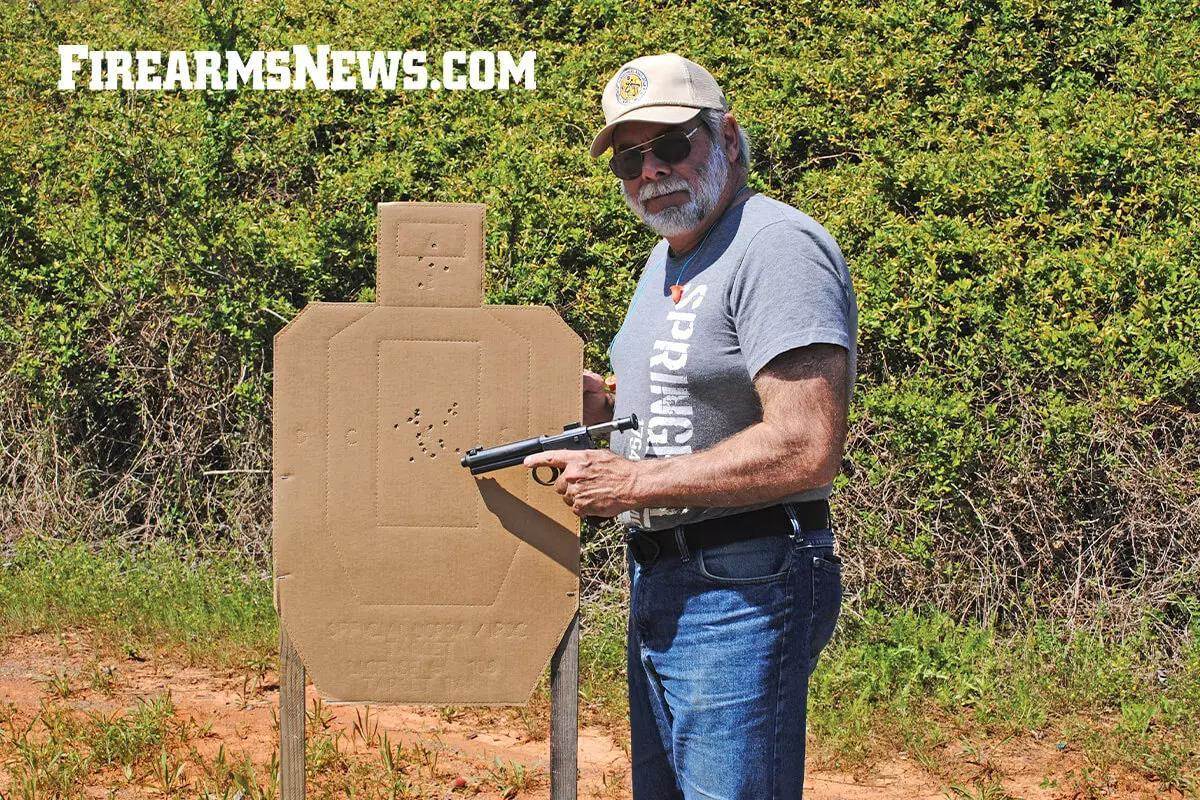
June 26, 2024
Sure armies have been well-known for his or her observe of adopting firearms with distinctive traits. Whether or not this was the results of a fascination with a sure mechanical peculiarity, the affect of some preeminent engineer or administrator, nationwide delight, monetary constraints or lack of outdoor influences, sure nations have tended to provide navy small arms with a “nationwide character.”Maybe none is best recognized then the Austro-Hungarian Empire. The handguns utilized by the empire throughout this era — akin to the large Gasser 11mm Cavallerie-Revolver M.1870 revolver — strengthened this pattern in direction of distinctive (oddball?) designs. Luckily within the space of rifle design the Austro-Hungarian military discovered salvation within the abilities of Ferdinand von Mannlicher. And whereas his clip loading rifles have been certainly the primary really sensible navy repeaters they’re higher recognized for his or her straight-pull bolt motion when everybody else on the planet was going with a flip bolt design.

In 1898, the Austro-Hungarian military made its first hesitant steps in direction of modernizing their handguns once they adopted the 8mm Rast & Gasser Infanterierevolver. The late nineteenth Century noticed the event of the primary profitable, albeit lower than sensible, semiautomatic pistols. A number of Central European gun designers turned fascinated with adapting Mauser’s new charger (stripper clip) loading system to the brand new breed of self-loading pistols. And whereas the ensuing pistols can’t be thought-about overly sensible it ought to come as no shock that they might attain their best reputation inside the Austro-Hungarian Empire. Karel Krnka (1858–1926), a Czech engineer who was one of many extra prolific firearms designers of his day. In 1895 he patented a semiautomatic pistol which had two options that turned emblems of his pistol designs: a protracted recoil working system and a non-detachable journal inside the grip that was loaded with chargers. In 1898, Krnka went to work on the Georg Roth Patronenfabrik in Lichtenwörth, Austria which offered him with the means to good his pistol.1 As Roth’s manufacturing unit didn’t possess the services to fabricate firearms it was organized for Krnka’s pistol to be produced by the Sauer Firm in Germany round 1900 because the 7,65mm Roth-Sauer Selbstladepistole.2 Whereas industrial success and navy orders at first eluded them, Krnka’s (and Roth’s) fortunes modified in 1905 when the Austro-Hungarian military introduced a sequence of trials with the purpose of discovering a semiautomatic pistol. Roth supplied an improved Krnka design for consideration, and after trials in opposition to pistols submitted by Luger and Mauser it was adopted in 1907 because the 8mm Repetier-Pistole M.7 (a.ok.a M.7 Roth-Krnka, M.07 Roth-Steyr).

Word: Austria-Hungary the primary main navy energy to undertake a semiauto pistol as their customary concern handgun. And earlier than my overworked editor is deluged by irate letters from readers let me add that whereas the Swiss adopted the Parabellum pistol in 1900 I don’t contemplate them a “main” navy energy. And whereas the Parabellum was additionally taken into service in Germany in 1904, it was solely utilized by the Imperial Navy and didn’t develop into basic concern till after 1908.
The M.7 adopted the distinctive define of the sooner Roth-Sauer with rounded grip, tubular receiver, and a separate bolt with an uncovered knurled head for cocking. It utilized a rotating barrel to lock and unlock the motion which, whereas it was attribute of different Austrian service pistols, noticed little use elsewhere. The bolt extends the total size of the tubular receiver. The ahead portion of the bolt is hollowed out to encompass the barrel, each of that are inserted into the receiver from the entrance. 4 cam lugs on the barrel, two close to the muzzle and two close to the chamber, transfer inside helical grooves within the muzzle bushing and on the rear of the hollowed out portion of the bolt, locking the bolt and barrel collectively. When fired the M.7’s bolt and barrel recoil collectively about half an inch whereupon the ahead lugs transfer within the barrel bushing grooves to rotate the barrel which in flip rotates the 2 lugs on the rear of the barrel roughly 90 levels to unlock the bolt from the barrel and permit it to proceed rearward extracting and ejecting the empty cartridge. The bolt is then pulled ahead by the recoil spring, stripping the subsequent cartridge from the journal and chambering it. Because the barrel strikes ahead, it’s rotated in the other way as soon as once more locking once more.
Commercial

The M.7 was loaded by pulling the breech bolt to the rear and pushing in a small sq. button on the left rear of the body locking it in place. A ten spherical charger was then inserted into the guides on the rear of the ejection port and the cartridges pushed down into the journal. The clip was then eliminated, and the bolt retracted barely, permitting it to journey ahead and chamber a spherical. Because the bolt moved ahead the striker was held in {a partially} cocked place and its tail projected out the tip of the breech bolt knob the place it acted as a loaded chamber indicator. It utilized a slightly distinctive set off system by which a semi-double motion set off — with a reasonably lengthy and heavy stroke — drew again the partially cocked striker to full cock earlier than releasing it to fireplace a cartridge. Unloading was achieved by pulling the bolt to the rear and locking it open after which urgent the lever above the left grip panel which allowed the contents of the journal to be ejected out the highest of the pistol.

The cavalry — probably the most prestigious department of the Austro-Hungarian armed forces — felt that the M.7 had all the benefits of the brand new semiauto pistols: excessive journal capability, quick reloading and simpler dealing with; however with the normal security options of a revolver kind set off. It was felt this mix of options would stop accidents of the kind envisioned if troopers on frisky mounts have been armed with pistols with gentle, single motion triggers. Roth organized for the M.7 to be manufactured by the Österreichische Waffenfabrik-Gessellschaft of Steyr. Further M.7s have been additionally produced by Femaru Fegyver es Gepgyar in Budapest, Hungary and the producer’s title is discovered on the highest of the receiver. Restricted manufacturing seems to have continued at each services after WWI.

The M.7 was chambered for a proprietary cartridge, the 8mm M.7 scharfe Pistolepatrone (a.ok.a. 8mm Roth-Steyr). It consisted of a straight walled, rimless case 18.5mm lengthy whose 116-grain full metallic jacketed (FMJ) bullet had a rated muzzle velocity of 1,088 toes per second (fps). In accordance with Austrian writer and navy historian Josef Mötz, it was utilized by all branches of the Austro-Hungarian armed forces and navy and restricted numbers have been launched on the civilian market. Late within the struggle many M.7s have been issued to the Flying Corps the place they have been known as “Flieger-Pistolen.” After the struggle, each Austria and Hungary continued to make use of the M.7 pistols whereas numbers have been provided as struggle reparations to Serbia, Greece, Rumania, Italy,
Poland and Czechoslovakia.
Commercial

When Hitler integrated Austria into the German Reich in 1938, most Austrian military models have been reequipped with German gear whereas Austrian weapons, together with the M.7 pistols have been put into storage. As WWII wore on and the Wehrmacht turned determined for added small arms some M.7 pistols have been issued. Others confirmed up within the arms of partisans within the Balkans whereas the Italians continued to fabricate 8mm M.7 ammunition for theirs. My pal Tim Hawkins offered me a Steyr-made M.7 whose acceptance marks exhibiting it had been taken into service in1909 and had a marking disc indicating it was the tenth pistol issued to the Landwehr Ulan Regiment 6. I check fired Tim’s M.7 offhand from seven yards. It pointed very naturally, and the set off pull had a particular two stage stroke with a reasonably gentle let off. Regardless of its small sights, and utilizing Fiocchi 8mm Steyr ammunition, I put all my rounds within the goal’s A zone and “head.” And regardless of its age I didn’t expertise a single malfunction. Not too dangerous for ein altes Mädchen (an outdated lady) from Steyr.

8mm Repeitier-Pistole M.7 Specs
- Caliber: 8mm M.7 scharfe Pistolen-Patrone
- General Size: 9.2 in.
- Barrel Size: 5.2 in.
- Weight: 36 oz.
- Journal: 10 rds., charger loaded
- Sights: Inverted V blade (entrance), V notch (rear)
- Worth: $2,000+
Video That Could Curiosity You



